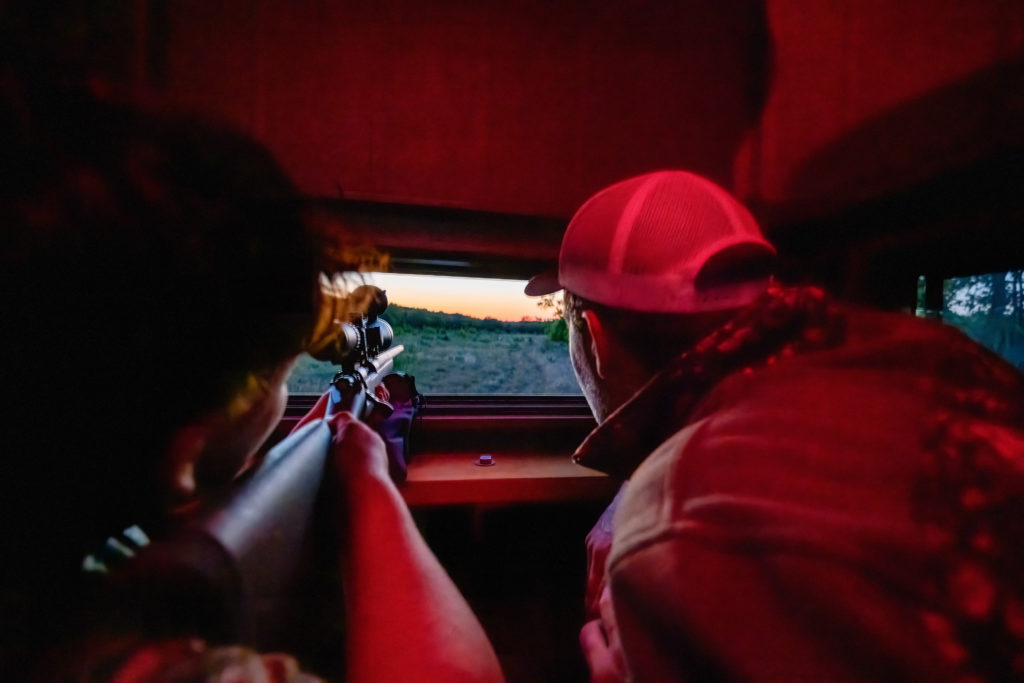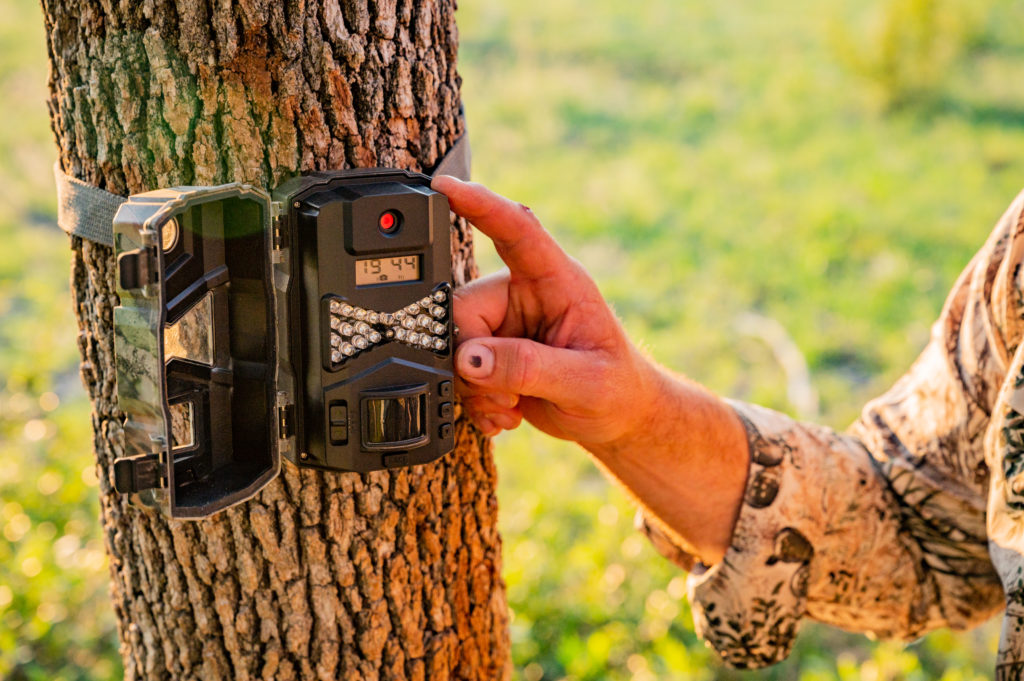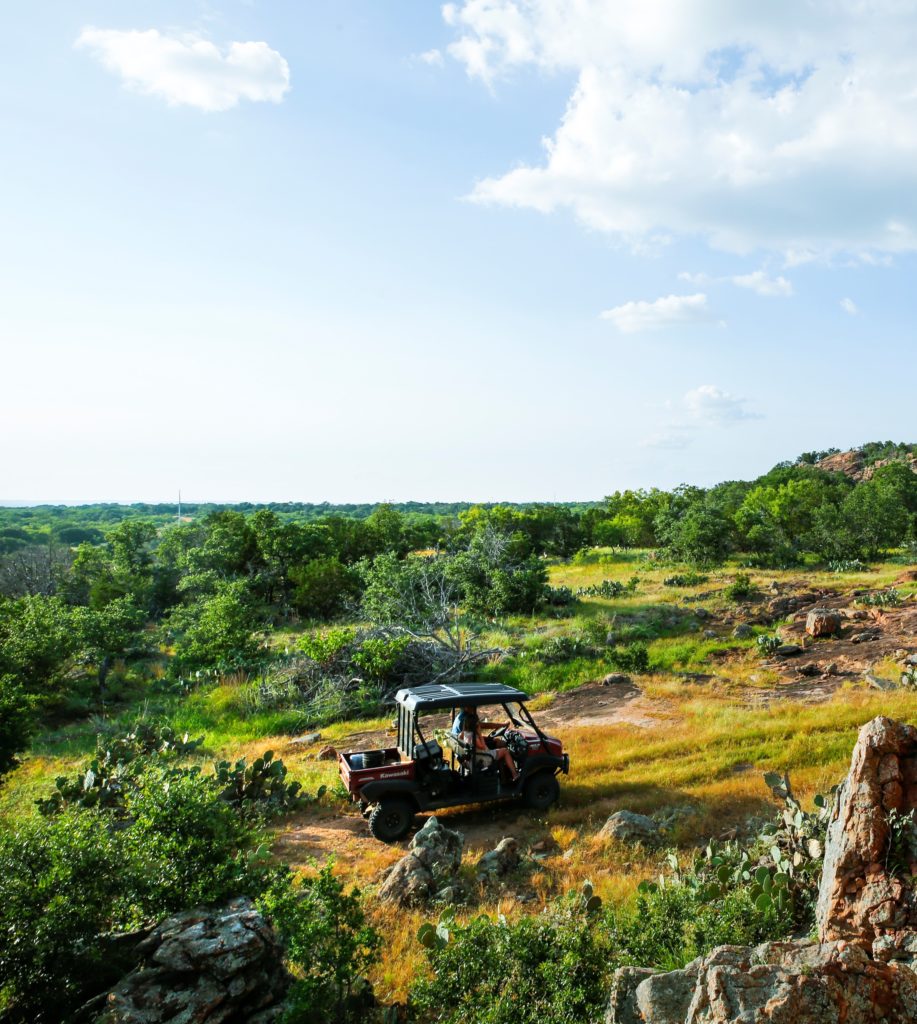6 Tips for Prepping Deer Camp
August 12, 2024
Getting deer camps properly prepped for the hunting season is essential for a successful fall. For many, a well-run deer camp prioritizes property preparation throughout the year.
A lot can happen over the spring and summer months – rifles get knocked out of alignment, windstorms can cause downed trees blocking access to the stand, and floods can scatter debris all over your deer camp leaving you with plenty of prep work before the start of the season. Here are our top six tips for preparing for hunting season and getting deer camp ready.

Sight-in Your Rifle
Sighting-in your rifle is one of the most important steps of preparing for hunting season. Start by giving your firearm a thorough cleaning. This will help improve your accuracy even before sighting-in your gun. Rifles should always be sighted-in before every hunt using the ammo you plan to use during the hunting season. Zero your rifle in at the distance you will be hunting from – 100 yards is a common practice. Be sure to stock up on your preferred ammo early to avoid running out when it matters most. Getting a jumpstart on sighting-in your rifle before the beginning of the season allows you plenty of time to find the right load and get a few practice shots in before opening day.

Set up Game Cameras
Successful hunters know that keeping track of deer movement is important, and now is a great time to set up cameras to collect as many photos as possible. Monitoring your game cameras will give you a better idea of deer and wildlife movement patterns in the area and offers valuable insight into which deer are utilizing your hunting area. If you’re using your existing cameras, make sure to buy fresh batteries and use cleared and formatted SD cards to optimize performance when scouting for deer. Also, make sure to double-check the straps that are holding your camera to the tree and replace them if necessary. Placement of your cameras is critical; near any food plots, wildlife feeders, or likely game paths to determine deer movement.
Game cameras are a great tool to help understand an animal’s behavior and the area you’re hunting in – where the food is, where the animals go to drink, and what places give shelter from the weather. Scrutinizing and learning this information will often yield a far more productive hunting season.
Check Your Gear
Now is an ideal time to head out to your favorite hunting spot to check your equipment and take inventory of all your gear. Visit your tree stand or deer blind and shoot a few targets from your stand to help improve field accuracy. Upgrade anything that’s old or worn out and give yourself plenty of time to get accustomed to any new gear, especially if it’s a new rifle. Be sure that your rangefinder has new batteries, and that your hunting knife is sharp and ready for processing. The last thing you want is for your equipment to fail you when you’re in a high-pressure, high yield situation.

Maintain the Path to Your Hunting Locations
One of the first things we like to do is to start off with a drive-by in the UTV to check every road, trail, feeder, and hunting stand location. This will give you a high-level view of the areas that need work or have been designated a high priority. During the season, getting to your stand quietly is key to a successful hunt. We recommend plotting out the most direct path to your stand and cutting back any brush that would keep you from getting into the stand quietly. Mow the paths in and around your deer blind, use a chainsaw to cut back downed branches and remove any cumbersome brush preventing you from making a stealthy entry.
Evaluate and Prep Your Stands and Blinds
Before opening day, you will want to give a detailed inspection of every hunting stand, including blinds, tripods, ladder stands, climbers, and lock-on tree stands. Safety should be your top priority!
Enclosed deer blinds are often havens for wasp nests and spiders and if wasp nests are found, spray the pests, and then remove their nests. Remove any trash, sweep the floors, shake out any carpet or rugs if you have them, and staple any new window material if needed. Minimize sound by installing new floor carpet and oiling squeaky seats.
Make sure all your tripod stands and tree stands are checked for safe conditions. Check all frame nuts and bolts to ensure they are tightened for all stands or blinds, and the necessary anchors or straps are in good condition and secured in place.
Be sure to trim any new tree or brush growth around your stand for safety and to increase visibility when it is time for the hunt.
Preparing for next year
As deer season progresses, make notes during the actual hunt as to what worked and what didn’t so you can continually improve your performance in the field. To optimize your time and ensure things run smoothly, prepare for the next season before the current season even ends. And always, we hope your hard work pays off and you’re rewarded with a well-stocked freezer and successful harvest season.
Rice Farming: The Heartbeat of the Texas Coast
September 30, 2025
Fried Dove Breast Filets with Cream Gravy and Angel Biscuits
September 11, 2025
Hearty Venison Chili Recipe
September 11, 2025
Recap: 3rd Annual Knockout Clay Shoot with TWA
September 4, 2025
Dove Season Social: Turning Sport into Family Traditions.
August 8, 2025